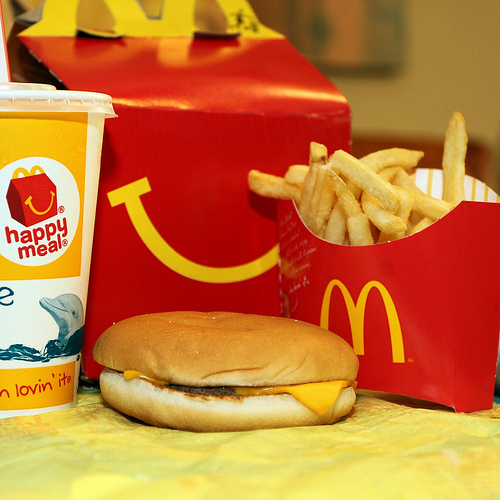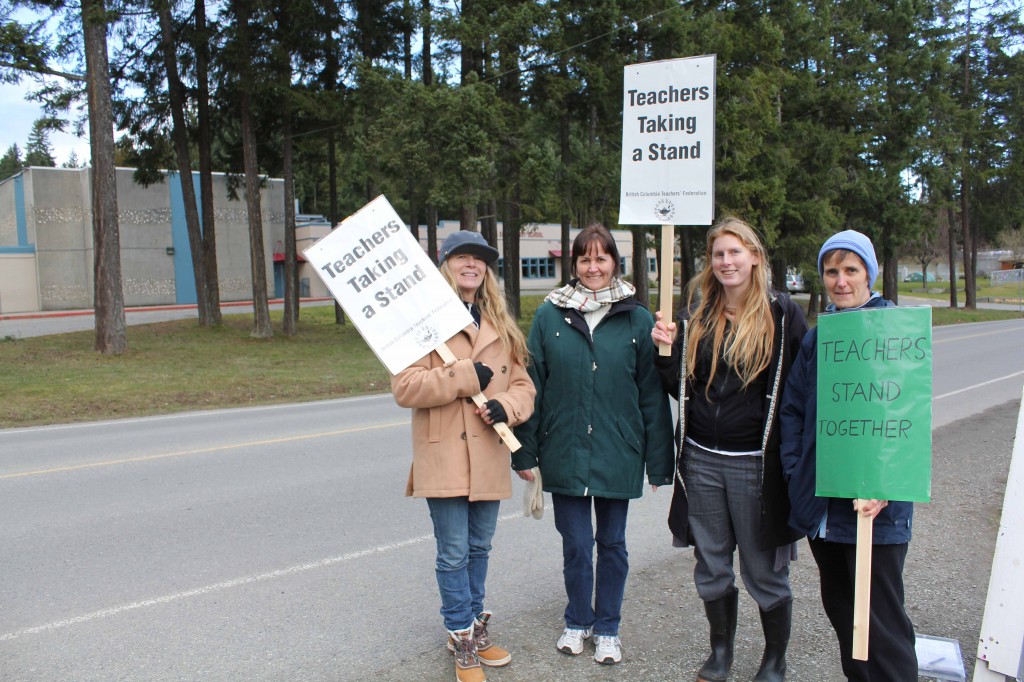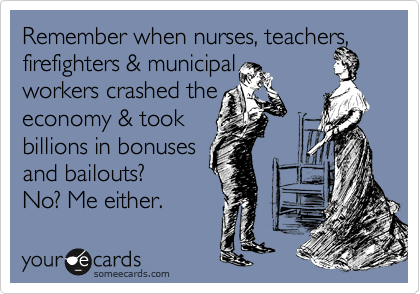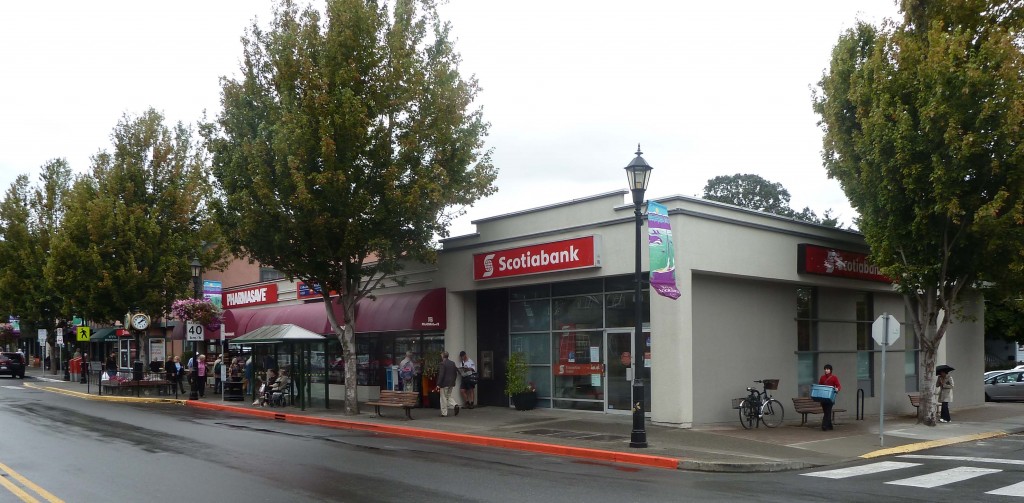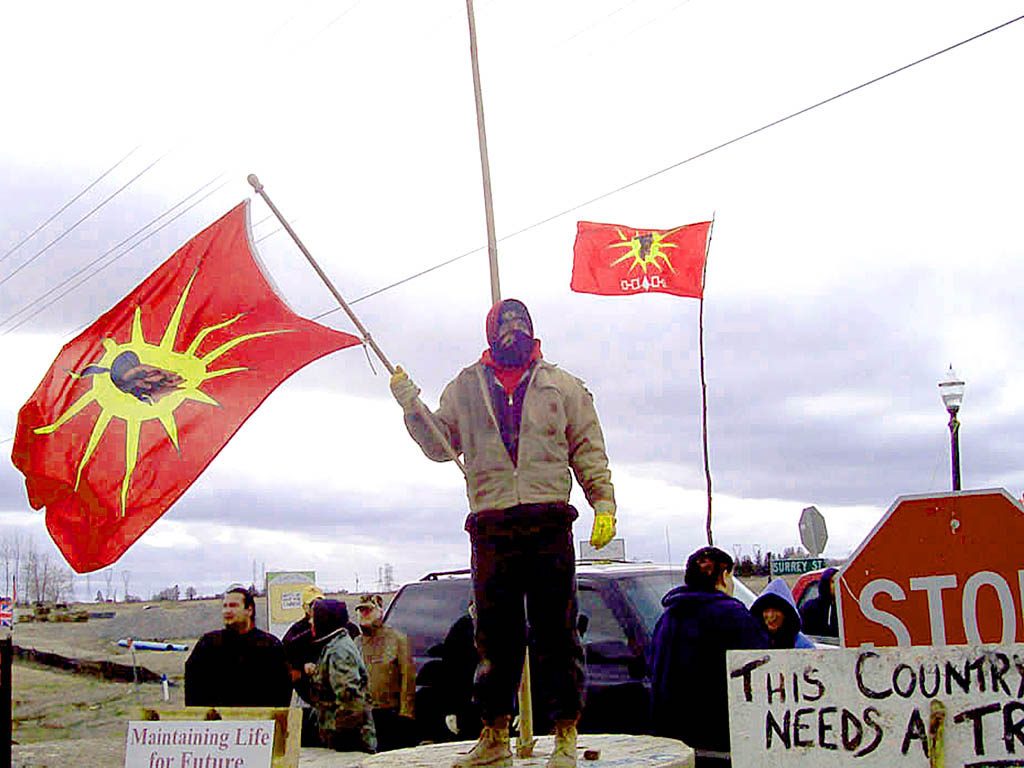Rarefied Beef and Deep Fried Sushi
Who, in their right mind, could resist the
MacDonald’s Happy Meal pictured above?
I picked up on this story from an article in the National Post last week (Rarefied Beef) as it has long been a mystery to me why the lowly hamburger, one of the five main foods in the Canada Health Food Guide and sold by the billions across Canada, is only considered to be safe when it is cooked to the consistency of shoe leather. From my perspective, the hamburger ranks about even with a morning coffee at Tim Horton’s coffee as an essential part of the Canadian diet.
Personally, I like my hamburgers thick, juicy and cooked to a point where there you can still 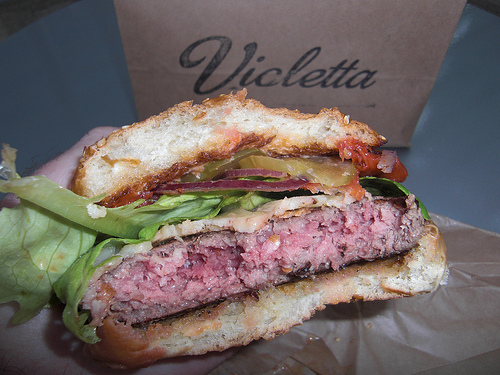 see a small ribbon of pink after that first delicious, mouth watering bite. When I was little, I used to snipe bits of raw hamburger when mom was mixing the ground meat with egg (also a raw ‘no-no’), onions (you can eat them raw, but I recently learned they suck in bacteria after being sliced), breadcrumbs (to make the meat go further), salt and pepper (pretty safe). A few of you may cringe at knowing at my mom let me have a bite of raw burger?
see a small ribbon of pink after that first delicious, mouth watering bite. When I was little, I used to snipe bits of raw hamburger when mom was mixing the ground meat with egg (also a raw ‘no-no’), onions (you can eat them raw, but I recently learned they suck in bacteria after being sliced), breadcrumbs (to make the meat go further), salt and pepper (pretty safe). A few of you may cringe at knowing at my mom let me have a bite of raw burger?
Well, my mom was a professional cook (today we would call her a Chef) for her entire life (she passed away in her early 90s) and never once did she turn a burger into shoe leather and, guess what, in some eighty years of cooking (she started young) she never poisoned anyone.
Photo (Web) The Violetta Burger, served up by the Rollin’ Etta food van in Portland, Oregon, is reported to be the best of the best in the Pacific Northwest: Link here
Cooking a thick burger until the pink is gone means the surface is likely charred to a crisp and most of the juice long since disappeared into those BBQ flare-ups. I have even watched as people squished the meat down to get rid of the final threat in that juice. Yummy, another hamburger sacrificed to the temperature police. You may just as well have picked up a Big Mac, or taken out one of those thin, frozen patties, thrown it in the microwave and nuked it until every little critter that might have at one lived in that burger, was dispatched to the great beyond. Most certainly, that burger will be totally safe, but what’s the point? Does it sound like a burger you would enjoy?
My mother-in-law (I loved her dearly), a war bride from England (the English wrote the book on overcooked meat), was a person who played it safe with every cut of meat. In true British tradition, she cooked a roast until the inside was as crisp and colourless as  the outside. Mind you, it was mildly OK if you cut it very thin, smothered it in gravy and used plenty of ‘hot’ horseradish. One thing it could never be called was succulent to the last bite.
the outside. Mind you, it was mildly OK if you cut it very thin, smothered it in gravy and used plenty of ‘hot’ horseradish. One thing it could never be called was succulent to the last bite.
It took the better part of ten years to get her daughter (that would be my buddy and life partner), to slowly make the switch from over cooked to a touch of pink, then a rich, red in a roast. She now has no idea why she even liked meat that was cooked to a colourless, dry mass.
Photo (Web) This Prime Rib leaves the mouth watering.
My Dad and his friends seldom cooked anything beyond the point of searing the surface. Unless the meat was running red, it was considered over cooked. Perhaps their impatient hunger was partially the result of the half pack they had each consumed before deciding they were hungry!
For North America at least, the explanation seems to lie in the fact that someone, somewhere, sometime, suffered from food poisoning that was traced to a piece of infected meat. A recent article in the National Post mentioned a 1993 case where 73 Jack in the Box outlets suffered an outbreak of E. Coli poisoning in which four people died and 700 taken to the hospital. The story went virile, food-safe scientists jumped on the bandwagon, a minimum internal temperature of 70oC (160oF) was declared necessary to kill E. Coli and the rest, as they say, is history. It is a good thing those same scientists did not look at people killed or injured in car wrecks or we would all be walking.
A National Post reporter also spoke to one restaurateur, who said he was more than willing to cook burgers that leave a band of pink, as well as a little food value and taste, still intact. That restaurateur had no concerns about E. Coli as he felt basic cleanliness was the key to safe food. If you find a restaurant that overcooks everything, perhaps you should have the health inspectors check out the kitchen.
 Also, as pointed out in the article, restaurants in many countries around the world serve various cuts of fish, chicken, meat and similar products, raw, the belief being, I suppose, that raw foods, including vegetables (many with skins), taste better and provide the best food value.
Also, as pointed out in the article, restaurants in many countries around the world serve various cuts of fish, chicken, meat and similar products, raw, the belief being, I suppose, that raw foods, including vegetables (many with skins), taste better and provide the best food value.
Photo (Web): Consider for a moment how much safer the Sushi in this display would be if it had first been cooked to a temperature 70oC!
In North American cities and towns, the fear capitals of the world, tons of raw fish are sold in Sushi Bars each day. Just watch, some day, someone somewhere will suffer food poisoning after eating their favourite sushi lunch. The media will pick up the story, the fear will spread, the Sushi Scientists will become involved and shortly thereafter, all Sushi Bars will be required to buy thermometers to make sure the fish has been cooked to the magic 70 mark. For the connoisseur of fine sushi, the world will be forever changed.
Apologies to my sister Dianne, you will have to become accustomed to pan or deep fried sushi when you visit our home as we do not wish to take a chance on poisoning you. Yummy!
In closing, I think John stated it best in one of his many hits:
Ministers, sinisters, banisters and canisters
Bishops and Fishops and Rabbis and Popeyes and bye-bye, bye-byes
All we are saying is give food a chance
Harold McNeill
Victoria, BC
Link to National Post article: Rarefied Beef
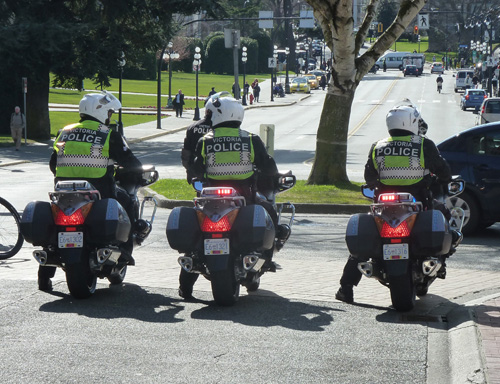
The temperature police in downtown Victoria
(2341)
BCTF Strike Rally
June 5, 2012: Brenda Peacock, Jane Tufnail, Andrea Doak, Kate Reynolds across the street from Gabriola Elementary School on day one of the three-day strike. (Derek Kilbourn photo)
June 4, 2014: This was posted by Kari McNeill, our daughter, on FB Page. Her sister and our other daughter, Christine LeClair, was at one time a teacher so, I suppose, I am biased in these matters. But this postcard makes a pretty awesome statement as Governments (in general) never went after the Wall Street Traders, Enron Fraud Artists, or the Dot Com Billionaires who helped to push many local, state, provincial and national economies near bankruptcy. Have you perhaps had a chance to read what some state governments (e.g. Texas) have been doing to Education in the US? In Canada, we are not that far behind.
Note: (June 3, 2014): This story was originally posted in March, 2012 and is being brought forward as a result of the current lock-out/strike situation.
(1570)
My Tim Horton’s Morning Posts: February 2012
February 2012 Posts
February 29, 2012 Bill S-7, another Dangerous Bill to amend the Criminal Code, is back on the table
2012 Update to the Martin Niemoller quote below: “Since 2001, they began to chip away at civil liberties by makng changes aimed at ‘certain’ minorities in our society…I didn’t speak out because I was not one of those minorities.”
Over the past few days the ‘Robocall’ incident has dominated the news. Today, the National Post devoted a full 2.5 pages to the subject as they worked to play down the story suggesting it was all a tempest in a teapot. A few days earlier the same paper devoted only a few column inches on page 5, about the Conservatives resurrecting Bill S-7. I do not recall any radio or TV reports on the S-7 subject. What then is Bill S-7 and why do I, a retired police officer, express concern?
(2920)
Oak Bay Bank Heist
Photo (Author Files): This bank was robbed several times over the years. While all bank robberies have the potential for violence, the robbery in this story had a particularly tragic outcome for an ordinary family.
Bank robbers come in all shapes and sizes
as well as from varied backgrounds
The recent story of the young Calgary woman, a University Student Union President, made National headlines that thrust her into a certain kind of notoriety. Living a secret life, she is alleged to have committed several frauds as well as at least one bank robbery, the one for which she was recently arrested.
While the Oak Bay case is not a carbon copy it follows a similar circumstance, but is one in which the ending was far more tragic. Again, Detective Sergeant Al Campbell, was the lead investigator, the same Detective Sergeant who arrested one of the FBI’s Most Wanted – a multi-millionaire drug trafficker from Indiana who had been tracked down in south Oak Bay. (Link Here)
At one time during the 1970s and early 1980s, Oak Bay might easily have been tagged with the dubious distinction of being the Bank Robbery capital of the British Columbia, if not all of Canada. With a population of barely 15,000, there were several banks along Oak Bay Avenue and a lone bank on Estevan Avenue, banks that acted like catnip to robbers. Each bank was hit at least once and a few, more than once. For staid old Oak Bay, it was big news as bank robberies were still considered to be the most flamboyant and, at times, the most glamorous of crimes.
(5999)
Hugo, a movie well worth attending
On the recommendation of friends Garth and Esther Dunn, Lynn and I trotted out for our semi-regular Friday Night Dinner and Movie Date but instead of Friday we headed out Thursday to the Academy Award Winner Hugo.
Academy Award Winner Hugo.
The movie did not disappoint as the mixture of fantasy, reality, young, old, love, tragedy and the evolution of life, was juxtaposed with award winning sound, cinematography and visual effects that left us captivated from the opening scenes to the very end of the 127 minute production.
The only part we both still have trouble adjusting to is the 3D effects, although in this movie I think most would appreciate the stunning visual impact.
From a book Hugo Cabret, four thumbs up (with Garth and Esther that makes eight) to Marten Scorsese (another hit), Asa Butterfield (photo above) and Chloe Moretz (two kids in their early teens facing off against adults), Ben Kingsley (a convincing old man who felt his life’s work had been lost in a sea of change), Sacha Cohen (actually very well acted by Cohen who is cast in a more serious and touching role) as well as a host of others. Oscar wins: Cinematography, Art Direction, Sound Direction, Sound Mix, and Visual Effects.
(420)
Southeast Asia: A Magical Journey
Photo (Web Stock): Ha Long Bay is 120 km long, 1553 Km2 and
contains 1969 Islands formed from limestone karsts,
many of which are filled with expansive caves.
EXCLUSIVE ESCORTED TOUR TO VIETNAM, CAMBODIA
AND THE RICHES OF THE MEKONG RIVER
Expedia CruiseShipCenters, Sidney, British Columbia, invites you to join an exclusive Escorted Cruise to Vietnam, Cambodia and the riches of the Mekong River.
Note: Photos in this blog post taken from the Web.
From September 18 – October 3, 2012, you will be hosted, first on a seven day land tour beginning in Hanoi and then on a seven day river cruise, beginning in Siem Reap, then meanders along the Mekong River to Ho Chi Minh City (Saigon). On both arms of the tour you will be hosted on several side tours during which you will be exposed to the best the two countries have to offer. A three day pre-tour extension of Hong Kong is also available from September 15-18. (Tour details provided at the end of this article.)
(821)
New Orleans, the Gulf of Mexico and Caribbean
Canadians Invade New Orleans: Seize Navigator of the Sea’s
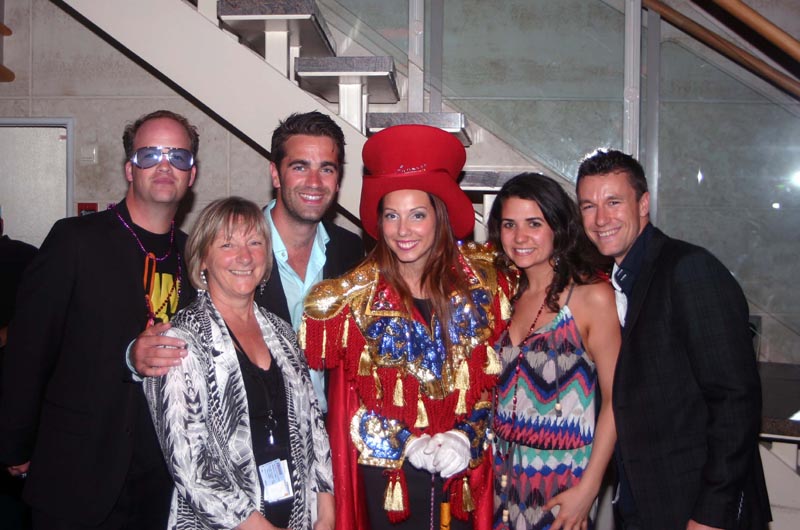
Photo: SIC Beauty members with the Cruise Director: An important thing to do on any cruise is to become friends with the Cruise Director.
This post begins with the second part of our holiday when our twenty-two member travel crew joined forces aboard the Navigator of the Seas. Rather than provide a traditional look at life aboard the ship, I have worked to provide a flavour of the special times and friendships that emerge when people actively seek out others to share their festivities.
There is little doubt that upon our departing from the Navigator, there will be a good percentage of the passengers and crew on board who will remember the fun-loving Canadians. While I have drawn attention to some our antics, it was all good clean fun on this special family holiday.
(1895)
Terrorists or Warriors, what is the difference?
Terrorists or Warriors, what is the difference?
Is it religion, ethnicity, or just a matter of definition?
In 2006, at the same time radicalized Six Nations members were occupying the Douglas Street Estates in Caledonia, another event was taking place less than 200 kilometers Northeast in the Greater Toronto area. In the GTA, eighteen men, reported to be radicalized Islamists, were being kept under intense surveillance by the RCMP and CSIS.
Following the arrest of the Islamists for allegedly planning a terrorist attack, the group became internationally known as the Toronto 18. The arrests brought a deluge of accolades, particularly from the US Secretary of State, Condoleezza Rice as well as other US and world leaders.
Prior to this arrest, heated rhetoric emanating from the US, accused Canada of being ‘soft’ on terrorists and having a border filled with holes. Despite the fact we had suffered only one major terrorist attack in the past century, that being the Air India bombing, the US felt Canada needed to be doing more to combat terrorism as it was defined by the US following the attack on the World Trade Centre. That Canada had not joined the war in Iraq remained another sore point in Canada/US relations.
Meanwhile, in the parallel Caledonia case, law and order began to fall apart when heavily armed and masked Six Nations ‘Warriors’ invaded and secured the Douglas Street Estates, a nearly completed housing development on the outskirts town. When the police did nothing to restore law and order on Estate property, the owners obtained a court order directing the OPP to dislodge the Six Nations Warriors.
After making one poorly planned and executed assault, the police, heavily outgunned and outnumbered, were easily repelled by the Warriors. It was a humiliating defeat for the OPP and one from which they would not recover. Following the raid, the Court orders to remove the warriors from the Estate properties were quietly left to rot on the OPP Commissioner Julian Fantino’s desk.
Even as people were being assaulted and hospitalized, Commissioner Fantino would not remove his order to his officers to “stand-down”. Those officers who chaffed at being restricted from arresting those found committing criminal offences and those who openly criticized the Commissioner’s order were removed from duty at the site and sent to some outpost to continue their career as a ‘red circled’ officer.
The Toronto 18 Terrorist Group
Back in Toronto, as bits of information were released by CSIS and the RCMP about the arrest of the Toronto 18 “terrorists’, the 18 men became widely known in Canada and around the world for the ineptitude of their Tim Horton’s planning sessions and the haphazard manner by which they went about recruiting members, several of whom were wide-eyed teenagers seduced by the glory of joining the jihadist cause. In the eyes of many, the whole episode reeked of political opportunism and police entrapment designed to show that Canada was a player in the fight against terrorism.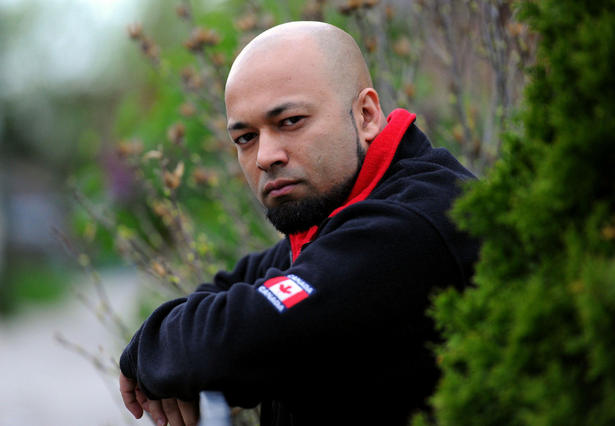
In one news report the Crown’s key witness, Mubin Shiakh (pictured right) recruited as an “agent provocateur” who infiltrated the group, made it clear the whole episode, while dangerous and could have resulted in death, was far from being a well planned terrorist event. The following is taken from the news report:
Having infiltrated what became known as the Toronto 18, he (Mubin Shiakh) doesn’t believe they (the Toronto 18) were capable of pulling off their ambitious plan to storm Parliament, set off bombs and behead our prime minister. But he believes that whatever course they settled on, it would have meant the destruction of human life.
Transcripts and stories about the setup of a radical training camp, in Washago, include a lot of trips to Tim Horton’s. The wannabe terrorists had a thing for French Vanilla coffee and hot chocolate.
“If you want to deal with terrorism,” Shaikh grins, “set up a Tim Horton’s.”
Before testifying, he asked for more money. But he says it was never conditional to his testimony. The idea he intentionally set these people up for profit seems laughable. Maybe I’m just not a risk-taker, but of all the get-rich-quick schemes, pissing off terrorists seems a notch below throwing yourself in front of a bus for the insurance. They may have been goofballs, prompted by jihadist propaganda, but goofballs attempting to acquire bombs.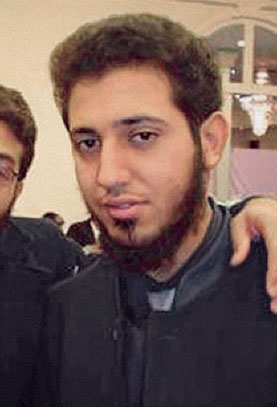
In another account, McLean’s Magazine spoke about a second informant, Shaher Elsohemy (pictured right), who was paid millions of dollars for his testimony. While McLean’s, as expected, took a hard-nosed view toward the terrorists and their capabilities, the introductory paragraphs provide a bit of insight into the motivations of the informants:
When his testimony wraps up in the coming days, the man once known as Shaher Elsohemy will step off the stand and disappear back into the arms of the witness protection program. For obvious reasons, nothing about his new life can be revealed. Not his fake name. Not his whereabouts. Nothing. But one thing is absolutely certain: when he does leave the witness box and return to a location unknown, he can walk away a happy man—vindicated, finally, after all these years.
Until last week, when he showed his face for the first time since 2006, Elsohemy was famous for two things: helping the RCMP topple the so-called “Toronto 18,” and being paid millions of dollars in the process. For more than three years, the Mounties’ star informant had to stay hidden in the shadows while countless fellow Muslims attacked his credibility. They called him a traitor. A rat. A money-hungry liar who deserves to “suffer in this life and the next.”
Let us accept that at least some of the Toronto 18 might be defined as bonafide terrorists and, left to their own devices, may have mounted some kind of serious attack. However, at the time of arrest, the eighteen had not yet harmed a hair on anyone’s head and had not damaged any property. In a normal investigation, they would most certainly have been charged with Conspiring to Commit an Indictable Offence with various sub-offences being listed in the indictment.
However, this was not the outcome as these men were Muslims and that fact alone lead to their being defined as “terrorists” as opposed to “criminals’. The result, they were charged under Canada’s new Terrorism Act, an Act that changed many of the rules of evidence, created much greater secrecy and provided more severe penalties.
One has only to scan the charges to see just how vague they had become as opposed to equivalent charges in the Criminal Code. Following is the disposition of 11 of the 18 cases:
Zakaria Amara
Guilty plea, October 2009, Appeal dismissed 2010
Participating in a terrorist group, intending to cause an explosion for the benefit of a terrorist group
Life in prison
Saad Khalid
Guilty plea, May 2009
Participating in a militant plot with the intention of causing an explosion
20 years in prison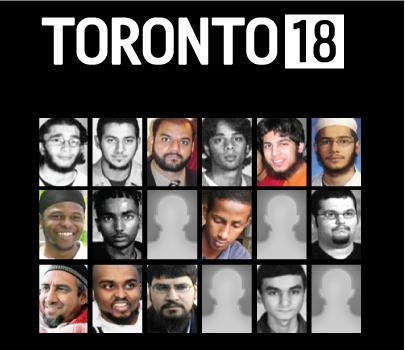
Fahim Ahmad
Guilty plea, October 2010
Importing firearms, participating in a terrorist group and instructing others to carry out activities for that group
16 years in prison
Saad Gaya
Participating in a militant plot with the intention of causing an explosion
Guilty plea, September 2009, Appeal allowed 2010
12 to 18 years in prison
Steven Chand
Participating in a terrorist group
Convicted, June 2010
10 years in prison
Ali Dirie
Participating in a terrorist group
Guilty plea, September 2009
7 years in prison
Amin Durrani
Participating in a terrorist group
Guilty plea, January 2010
7½ years in prison
Jahmaal James
Participating in a terrorist group
Guilty plea, February 2010
7 years in prison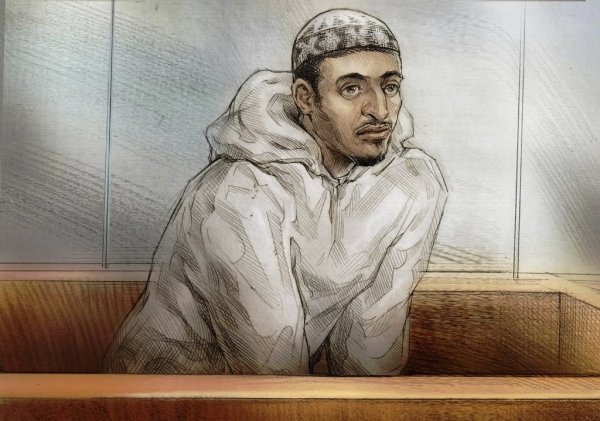
Asad Ansari
Participating in a terrorist group
Convicted, June 2010
6½ years in prison
Nishanthan Yogakrishnan
(previously tried as a youth, publication ban lifted on his name in September 2009)
Participating in and contributing to a terrorist group
Convicted, September 2008
2½ years in prison
Shareef Abdelhaleem
Participating in a terrorist group and intending to cause an explosion
The decision not yet handed down.
Charges Stayed in the Following Cases
Ibrahim Aboud
Participating in a terrorist group, training for terrorist purposes
Charges stayed, April 2008
Ahmad Mustafa Ghany
Participating in a terrorist group, training for terrorist purposes
Charges stayed, April 2008
Abdul Qayyum Jamal
Planning to cause a deadly explosion (dropped in November 2007), participating in the activities of a terrorist group and receiving training from a terrorist group.
Charges stayed, April 2008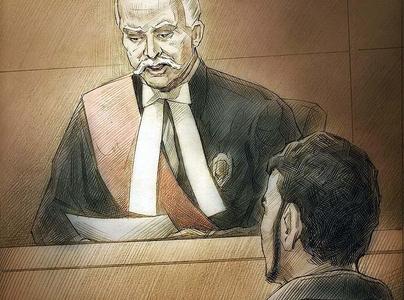
Yasim Mohamed
Participating in a terrorist group, training for terrorist purposes
Charges stayed, April 2008
Youth 2
Participating in a terrorist group, receiving training to be part of a terrorist group
Charges stayed, February 2007
Youth 3
Participating in a terrorist group, receiving training to be part of a terrorist group
Charges stayed, July 2007
Youth 4
Participating in a terrorist group, receiving training to be part of a terrorist group
Charges stayed, July 2007
Media outlets were severely restricted as to what they could publish about the case in that they could only report on evidence given in court. Even the preliminary hearing was cut short after Mubin Shiakh had given evidence. The case had then been sent to trial by direct indictment. Between guilty pleas and charges that were stayed the full story was never made public.
The Caledonia Terrorists
In Caledonia, the Six Nations Warriors had completed planning that went well beyond that completed by the Toronto 18. They had stockpiled numerous weapons and sufficient ammunition to start a small war, invaded a small community that was part of Caledonia, dug trenches across main highways, built barricades, 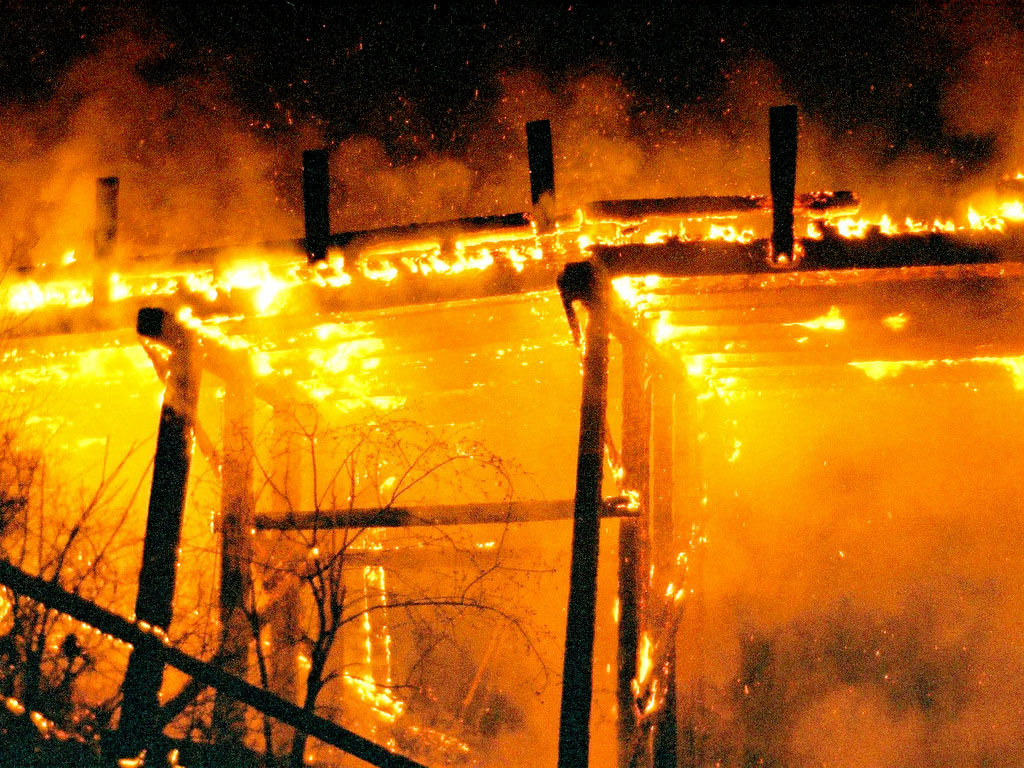 burned bridges, torched a Hydro Station, burned cars, fired shots and assaulted people, as a shortlist of their activities. They dressed in camouflage gear, wore masks to shield their identity, flew “their” nation’s flag, tore down and burned Canadian Flags. They confronted police and residents at every opportunity. For a visual of some of these events go to the Photo Gallery at the end of the Caledonia Post.
burned bridges, torched a Hydro Station, burned cars, fired shots and assaulted people, as a shortlist of their activities. They dressed in camouflage gear, wore masks to shield their identity, flew “their” nation’s flag, tore down and burned Canadian Flags. They confronted police and residents at every opportunity. For a visual of some of these events go to the Photo Gallery at the end of the Caledonia Post.
Only one charge was ever laid against any of the Warriors and that charge, Assault Causing Bodily Harm, was finally disposed of last year with the conviction of a man who was 18 at the time of the offence (22 at the time of conviction). He was sentenced to 18 months, so with time served he had spent less than a year in jail.
How could it be that one group of Canadian Citizens were left to walk free while another group of Canadian Citizens are now serving sentences that range up to life in prison for planning (rather poor planning) of an event that never came close to being carried out? Had those involved in Caledonia been Muslims, the outcome would have been very, very different. There would now be dozens of First Nations Muslims serving life in prison for “terrorist’ acts.
We should all be concerned about differential law enforcement in Canada. Why should Muslim Canadians be treated differently just because they are Muslims, of which a few (very few) are radicalized Islamists? On the other hand, why should Canadians, just because they are radicalized First Nations and feel their cause is just, be allowed to disregard the law with impunity.
Caledonia is no different from hundreds of other communities across Canada that depend upon the Government, Police and Courts to uphold the law in a fair and equitable manner. When all three levels abdicate that responsibility and anarchy is allowed to rein, as it was (and is) in Caledonia, respect for our institutions of law and order is greatly diminished.
Harold McNeill
Victoria, BC
Food for Thought:
Over the history of our country, a variety of immigrant groups have been subjected to various forms of discrimination. The Chinese, Japanese, German’s, Italians, Irish, Scottish and the list goes on depending on the decade and the particular status of the group in the dominant society, have each shouldered their fair share.
Since 911 Muslims, East Indians and others have shouldered the greatest burden of discrimination. For a variety of reasons, Native Indians have been marginalized and discriminated against from the very beginning.
Discrimination should be the reason for great concern as it diminishes our society in every way. That being said, I do not think discrimination alone is sufficient reason to become a radicalized Native, Islamist or any other particular group. To import hatred into a country that has accepted a person on good faith is simply wrong.
(2028)

